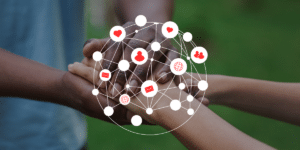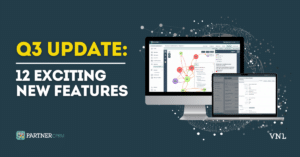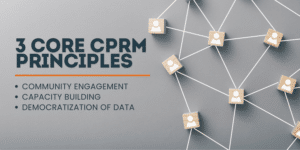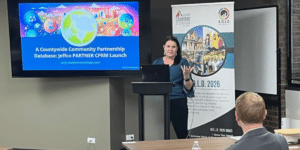
6 Simple Ways To Stay Active and Promote Well-Being at Work
Work dominates our lives. Many of us spend more time and energy at work than at home with family. We have all heard sales pitches for “new” strategies and tactics that promise amazing results. To reap those benefits always seems to require a total restructuring of processes and habits. However, those habits are exactly the reason many people are successful at their jobs.When it comes to superior work performance vs. slightly elevated well-being, most would, perhaps reluctantly, choose work performance.
“Staying active” and “promoting well-being” can conjure up images of 5am jogs in the park, green smoothies, going vegan, or other activities that seem to be the hollow domain of social media influencers and motivational speakers. This can leave many with the impression that lower-impact, more “chill” changes won’t have a significant effect on health and well being. Mental wellness and connectedness at work is crucial as well. Here are 6 ways that you can improve physical and mental well-being at work, whether you’re back in the office or still WFH.
Breaking Meeting “Norms” 
Even simple, low-impact movements like walking around your office or apartment can yield great benefits. Long phone calls, or a meeting in person or virtually can be a perfect time to multitask. If the situation permits, going for a quick walk while talking on the phone or a video call can actually help with focus and engagement: studies have shown that those who regularly participate in active meetings are 5.25% more likely to be creative at their job and are 8.5% more likely to report higher levels of engagement. All team members may not be physically able to participate in active meetings, and many meetings require computers or whiteboards. But just adding a little more activity throughout the day can yield noticeable results. Incorporating different settings and dynamics yield untold benefits: David Haimes, a senior director of product development at Oracle, has experienced this in his meetings with team members: “The fact that we are walking side-by-side means the conversation is more peer-to-peer than when I am in my office and they are across a desk from me, which reinforces the organizational hierarchy.”
Planning Activity Throughout the Day

Wearing an Activity Tracker
Wearable tech like Apple Watches and FitBits are fun ways to help stay on track and keep an eye on your activity. Apple Watches track a wide variety of activity metrics, including how many hours you’ve stood throughout the day. To log a “stand hour”, you must stand up and move around for a few minutes. The watch provides haptic alerts and encouraging reminders on when to stand up. This can be interactive with coworkers or friends and family, as you can share and monitor activity across each person’s device. For those working remotely, it can help link office-wide workouts and fun activities by alerting which workout a user performed, for how long, and how many calories were burned.“Fitness trackers are a great tool for heart health,” says Johns Hopkins cardiologist Seth Martin, M.D., M.H.S. “Being more active and changing your habits is important, but it can be difficult. Tracking likely helps a lot of people when combined with a clear goal to shoot for.”
Co-Working Spaces
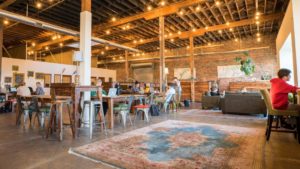
Drinking Water
Staying hydrated to support good health is one of the oldest tricks in the book. Yet, some studies have shown that 75% of Americans experience chronic dehydration. Dehydration can lead to lack of focus, headaches, muscle aches and cramps, and dry mouth. Besides being unpleasant, it impacts cognitive and physical performance. Adults are encouraged to drink at least 2 liters of water a day, or 67.6 fluid ounces. An added bonus to drinking the proper amount of water is that it also helps control weight. Studies have shown adults who drank a 17 oz glass of water exhibited a resting energy expenditure rise of 24-30% within 10 minutes of consumption, which continued on for at least 60 minutes.
Facilitating and Enabling Connection Between Employees
As teams grow, it can be difficult to maintain connections and a “community” feel.
While some have mixed opinions on office events like trivia nights or in-person and remote happy hours, many find that they assist with onboarding, and provide opportunities for employees to get to know one another and make connections. Adding lighthearted humor, depending on the culture of the office, can help foster a more inclusive and fun environment. Anything related to politics or other hot-button issues should likely not be shared. If it is appropriate, sharing funny, clean memes of commonly watched shows and well-known pop culture events can be easy ways to be a little more comfortable at work. Most everyone working in an office has seen just about every meme from “The Office”, so a new show might suffice. Having weekly round table check-ins on surface-level personal life and what people did on their weekends can have a huge impact. Letting personalities and interests shine in these meet-ups enable greater connection and belonging. This can be especially crucial in start-up companies who are constantly growing and adding to their teams.
2022 & Beyond!
The idea of “The Workplace” has undoubtedly changed since March 2020. It’s cliche, but small changes can make a big impact on wellbeing, health, and workplace motivation. Try implementing one of them, or a few in 2022.
About the Author: Will Jacobson
Will is the Marketing Intern at VNL, and he joined the company in October 2021. Originally from New York City, Will loves Colorado and all the outdoor life it has to offer. He is also a pretty big foodie! Will assists in content creation, marketing, and communications for VNL. He is finishing up his degree in marketing from the University of Colorado Denver.


